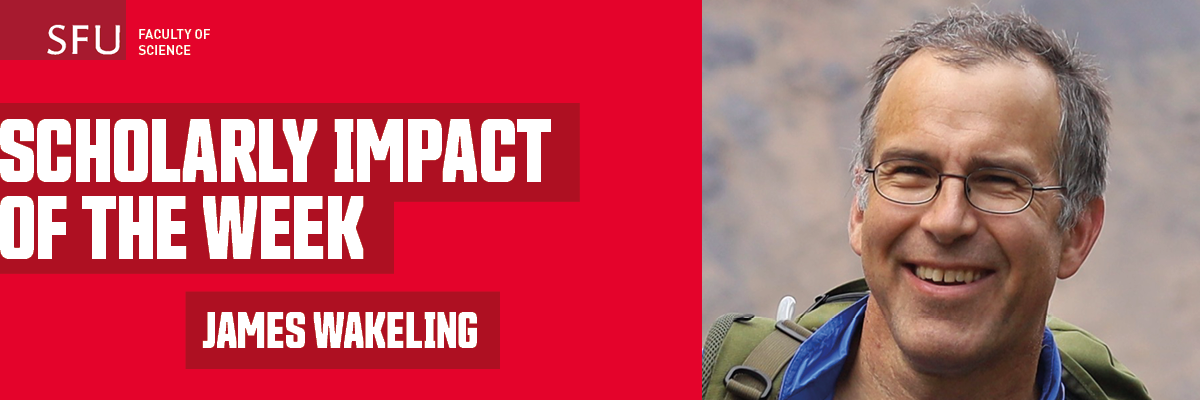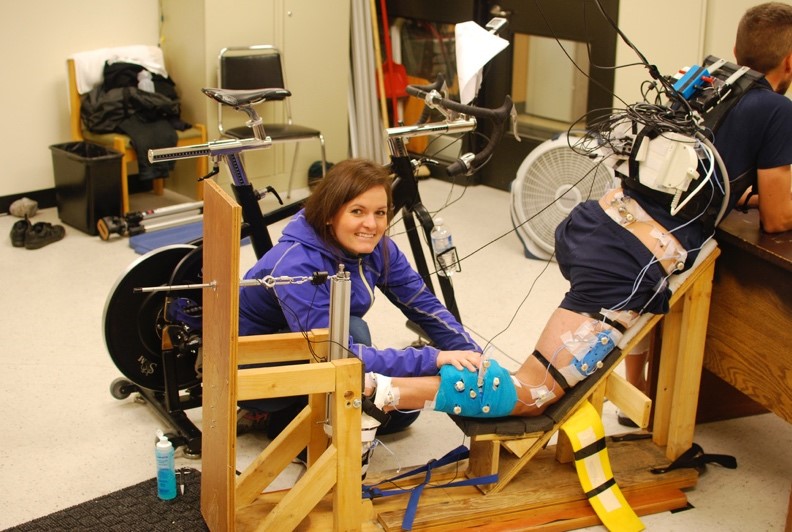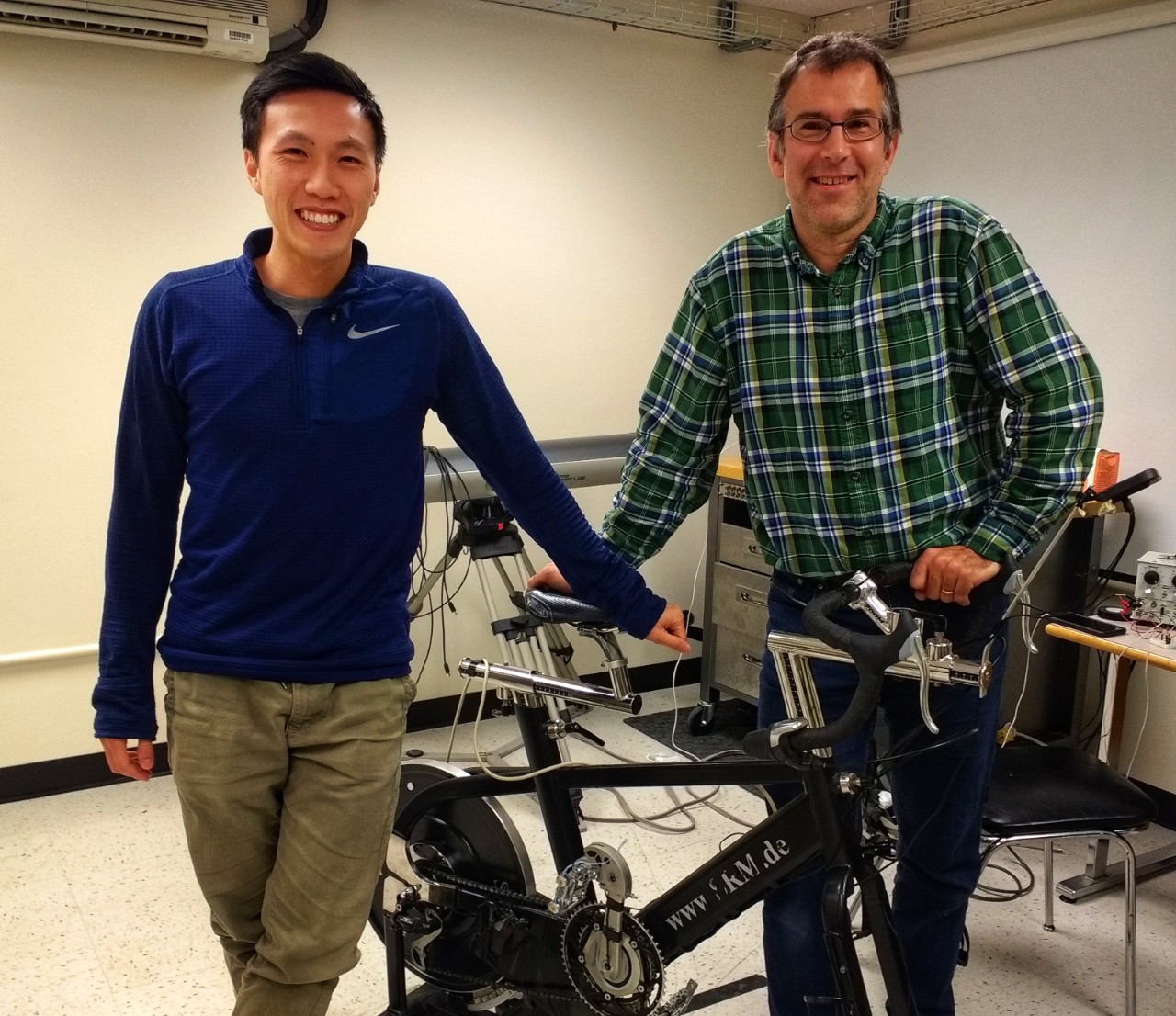
There are hundreds of muscles in the human body, and of these the skeletal muscles do the heavy lifting, generating the force and power required to move. Skeletal muscles make up 40% of our body mass, so their strength and functionality are very important for healthy mobility.
When muscles become weak, due to aging, illness, or injury it can have a host of health and mobility implications. Muscle forces affect various areas of the body, such as joints, which can be a factor in arthritis and osteoporosis.
James Wakeling leads SFU’s Neuromuscular Mechanics Laboratory and has been researching muscle function for over 20 years. Having a better understanding of the fundamental aspects of muscle force can help in many applications including training and rehabilitation, improving surgical procedures, designing prosthetics, and even inspire better engineering for robots.
Wakeling and colleagues at SFU, Harvard University and the University of Queensland recently published a study that is the culmination of roughly ten years of collaboration. Their paper, Task-dependent recruitment across ankle extensor muscles and between mechanical demands is driven by the metabolic cost of muscle contraction, included 13 previous papers and millions of dollars in funding. Contributing to the work were Andrew Biewener, from Harvard University, Taylor Dick from the University of Queensland (also an SFU alumnus), and SFU Postdoctoral fellow Adrian Lai.
Key to this study was testing the question: If the body chooses to minimise the metabolic cost of muscle contractions, how would it recruit its muscle fibres?
“My research addresses the big problem that fundamentally there is a lot that we still don’t know about how muscles produce force, and how the body controls muscles to produce this force,” says James Wakeling. “Building the knowledge base and designing the tools to answer these questions has taken many years of experimental studies and interdisciplinary collaboration.”
The muscle recruitment paradox
The skeletal muscles that enable movement are comprised of thousands of muscle fibres, or contractile cells. These have different types of contractile properties, ranging from slow to fast, and the way the body selects which muscle fibres to activate is known as recruitment.
Traditional thinking suggests that to minimize metabolic cost, slower muscle fibres will be recruited for every contraction, but only the fastest fibres will be recruited for the most intense contractions. However, this idea makes the paradoxical prediction that slower muscles fibres would be recruited for fast yet low-intensity contractions. This paradoxical recruitment makes neither mechanical nor metabolic sense.
Wakeling and his research team began to investigate this paradox. Initially, they developed and tested new signal processing techniques to uncover which types of muscle fibre were active during fast muscle contractions. Their early studies showed that the body may indeed favour the recruitment of faster fibres for fast contractions. However, this has far-reaching implications for how we understand muscle function.
It’s extremely challenging to measure muscle force directly, and next to impossible to do this in human studies. Therefore, physiologists have had to rely on computer models of muscle contraction in order to predict the function and dysfunction of muscles during movement. However, computer models that are founded on the traditional thinking of recruitment may not predict the correct forces.
After joining SFU in 2007, Wakeling teamed up with Professor Andrew Biewener at Harvard. They developed and tested new muscle models that could be directly validated on measured muscle forces during animal locomotion. Activating these models using the experimentally measured recruitment patterns resulted in better predictions of muscle force, but this still had limited utility in its understanding of how we move.


Designing technology to understand muscle function
There are more than 600 muscles in the human body, however, in most studies and clinical applications the activity and recruitment of a majority of these muscles would never be recorded. Instead, when movements and gait are predicted on a computer, musculoskeletal simulations are used in which the computer uses muscle models to both estimate force and predict the activity of all the muscles involved.
In order to tackle this problem, Wakeling teamed up with Postdoctoral fellow Adrian Lai. They set out to rebuild a commonly used musculoskeletal simulation package, called OpenSim, implementing their new ideas about recruitment and muscle modelling. OpenSim is a computational tool developed for a number of applications including assisting in the understanding of healthy and diseased gait, and predicting how gait may be improved with surgical interventions.
Lai travelled to Stanford University to work with the OpenSim development team and embedded the new muscle model into their software, which was then linked to external optimisation software to solve the recruitment paradox. He drove a series of musculoskeletal simulations using data from high-performance cycling that Taylor Dick (now at University of Queensland) had previously collected while a graduate student at SFU.
The recruitment paradox was solved in a way that made both mechanical and metabolic sense. The study showed that the general strategy of minimising metabolic cost could explain the predominance of slow fibre recruitment for slow contractions, and the favouring of faster fibres for fast but lower-intensity contractions.
Additionally, this general strategy better predicted how the different muscles of the leg worked together during cycling, again based on the different mechanical properties of the muscles. This work improves the overall understanding of how skeletal muscle systems work and is applicable not just to humans but animals as well.
“It’s exciting to draw together my 20-year research journey of multiple collaborations, blending experimental and computational studies, and identifying fundamental mechanisms that link the biomechanics of muscle fibres to the physiology of their recruitment,” says Wakeling.
“Having a better understanding of the fundamental aspects of muscle force will help in all applications that use this knowledge, from increasing athletic performance and training to better rehabilitation strategies after injury or disease, and much more.”
Wakeling is grateful to the many contributors and collaborators at SFU, Harvard, the University of Queensland - and beyond - and especially his most recent study co-authors, Andrew Biewener, Taylor Dick and Adrian Lai.
And he’s excited about the next discoveries this line of research may yield. For the moment however, he might just put his feet up.
SFU's Scholarly Impact of the Week series does not reflect the opinions or viewpoints of the university, but those of the scholars. The timing of articles in the series is chosen weeks or months in advance, based on a published set of criteria. Any correspondence with university or world events at the time of publication is purely coincidental.
For more information, please see SFU's Code of Faculty Ethics and Responsibilities and the statement on academic freedom.